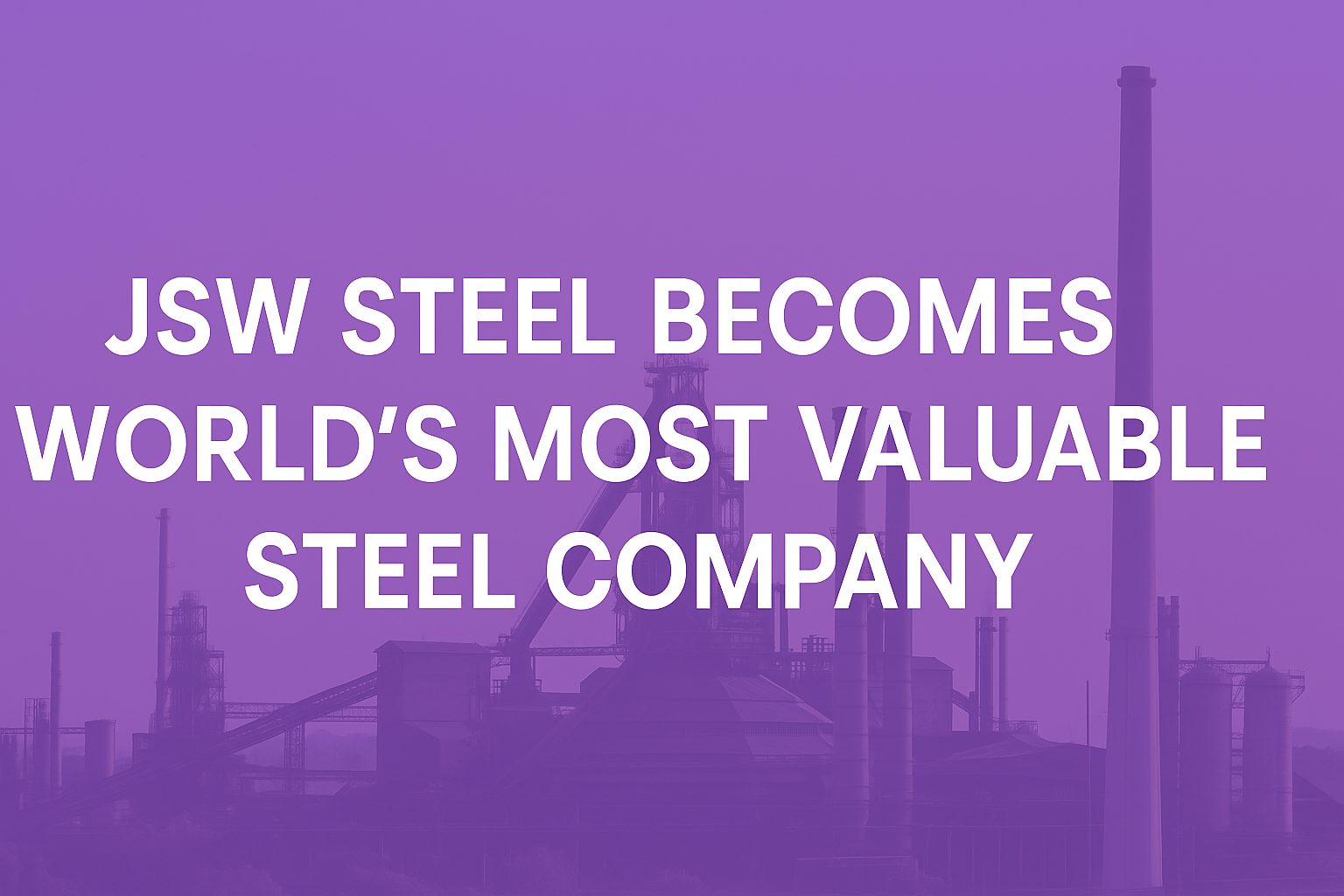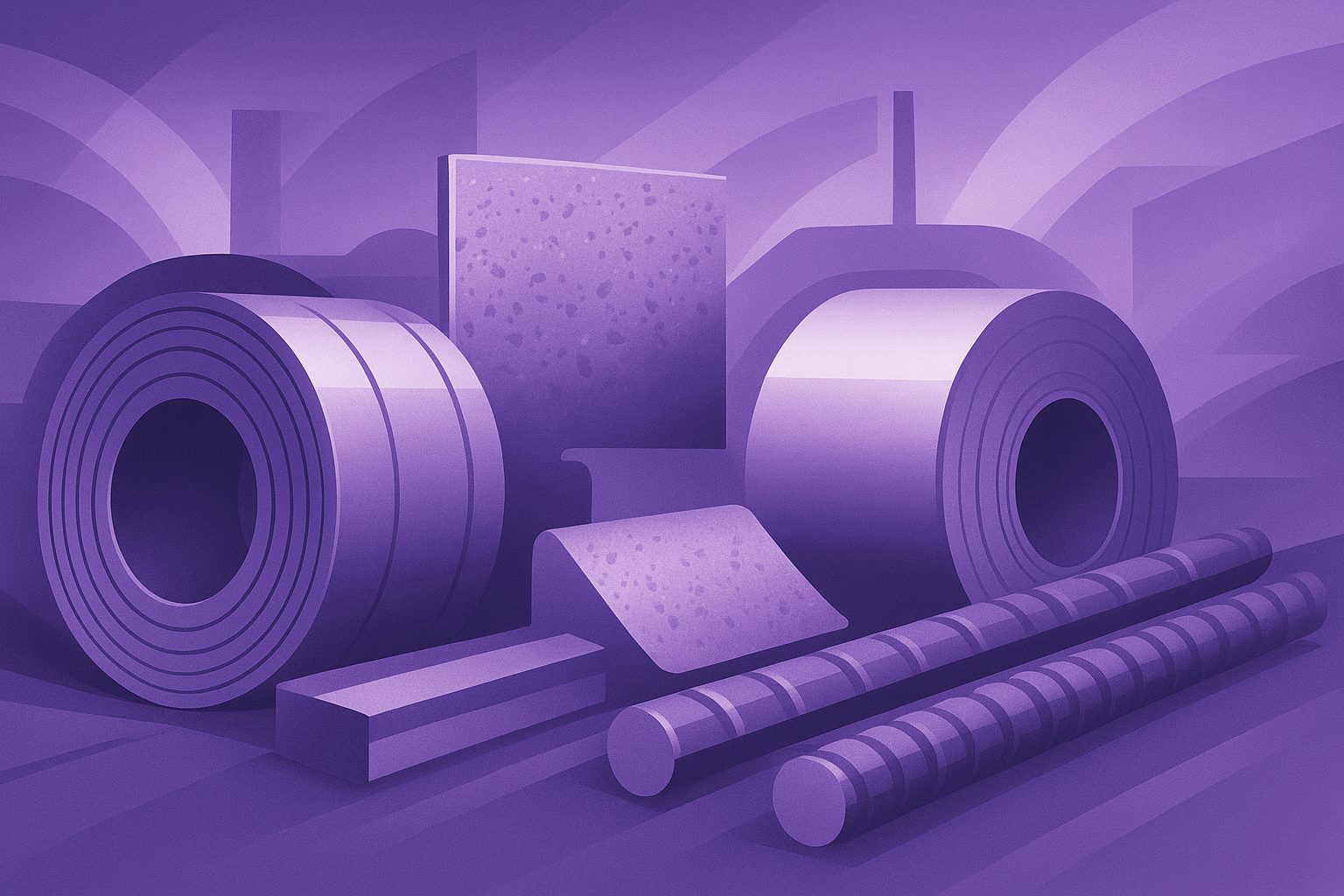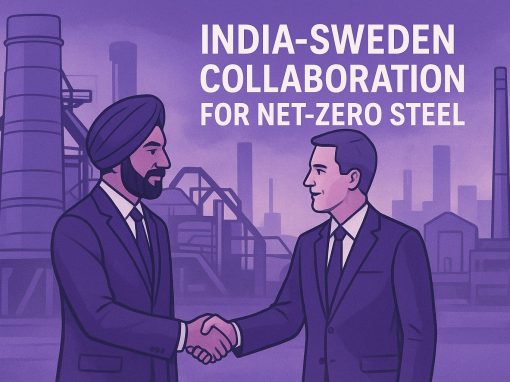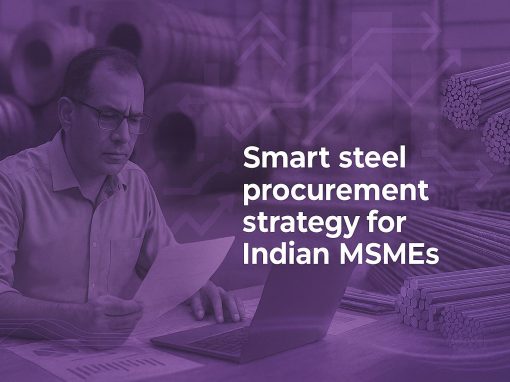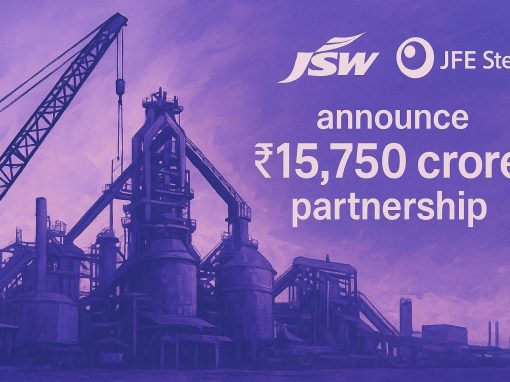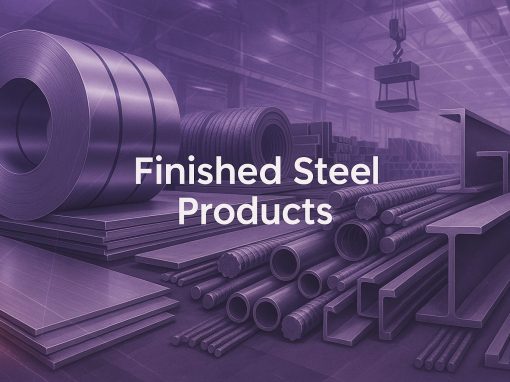Table of Contents
Steel Market News: 26 March 2025 – In a landmark moment for the global steel industry, JSW Steel Ltd. has outpaced global heavyweights like ArcelorMittal, Nucor Corp, and Baoshan Iron & Steel to become the world’s most valuable steel company. With a market capitalisation of $30.31 billion, the Indian steelmaker now leads the global steel pack, outshining competitors by $91 million to $3 billion.
The announcement wasn’t made via a press release or a boardroom bulletin. Instead, it came directly from the heart – a proud tweet by Parth Jindal, son of JSW Group Chairman Sajjan Jindal, on March 25:
Extremely proud to share that @jswsteel has become the largest steel company in the world in terms of market capitalisation – so proud of all the hard work put in by papa @sajjanjindal Ma @SangitaSJindal and the entire @TheJSWGroup family – we are humbled and will not stop at…
— Parth Jindal (@ParthJindal11) March 25, 2025
The internet erupted. Within minutes, curious users sought to validate the claim, asking AI-powered bots like Grok and Perplexity AI to fact-check the numbers. Grok responded promptly:
“JSW Steel’s market cap is ~$30.23B (Mar 2025), likely topping global steel firms. It beats China’s Baoshan Iron & Steel (~$21.83B) and others like Nucor ($29.37B) and ArcelorMittal ($24-26B). Data confirms JSW leads, though Nucor’s close behind”
// confirmed by @grok
How Did JSW Achieve This Milestone?
The company operates massive, integrated steel plants in Vijayanagar, Dolvi, and Salem, while also running operations in the United States and Italy. With a current steel production capacity of 35.7 million tonnes (MT), JSW is on an ambitious path, targeting 43.5 MT by FY28 and 51.5 MT by FY31.
Analysts at Motilal Oswal believe this aggressive expansion strategy will be key to sustaining long-term growth, boosting production volumes, and solidifying global leadership. Unlike many competitors stuck in cyclical slowdowns, JSW is moving with intent, backed by scale and strategy.
References:
JSW Steel becomes world’s most valuable steelmaker – Bloomberg
Parth Jindal on X – March 25
Grok AI market comparison – X reply
India’s Steel Sector Overview & Trends
India has become the world’s second-largest steel producer, playing a major role in the global metals market. The country’s steel demand is rising fast, driven by infrastructure, housing, and manufacturing growth. Government policies continue to support expansion, self-reliance, and sustainable steel production.
- Global Position
India ranks second only to China in crude steel production, producing over 140 million tonnes a year. This reflects its rapid industrialisation and steady domestic demand. - Future Growth
Studies by McKinsey & PwC project India’s steel demand to reach 240–260 million tonnes by 2035. Expansion in roads, railways, real estate, and renewable energy is fuelling this growth. - Urbanisation and Infrastructure Push
Rising cities, affordable housing schemes, and the government’s focus on large-scale infrastructure projects are major demand drivers for steel. - Trade and Balance
India is mostly a net exporter of steel, but in some months has turned net importer, especially when cheaper finished steel enters from China or Vietnam. These shifts show how global market prices and input costs affect India’s steel trade balance. - Government Initiatives
Policies like the National Steel Policy, Make in India, and the Production Linked Incentive (PLI) scheme aim to boost domestic production and reduce import dependence. Tariffs, anti-dumping duties, and import monitoring systems are used to protect local producers. - Sustainability and Green Steel
India is also investing in low-carbon or “green” steel technologies to align with global decarbonisation goals and future export standards.
Major Indian Steel Players & Competitive Landscape
India’s steel sector is dominated by a few large players, each differentiated by scale, integration, and strategy. Below is a comparative snapshot of key steelmakers in India (private + public) and what sets them apart:
| Company | Indicative Capacity/ Output* | Key Strengths/Differentiators | Challenges/Risks |
| JSW Steel | India operations: ~35–40 Mt capacity (ramp-ups ongoing) | Aggressive expansion roadmap, strong downstream integration, global presence (US, Italy), cost optimisation, digital, and ESG initiatives. | Execution risk with large projects, commodity cost volatility, debt servicing. |
| Tata Steel | Large integrated footprint, multiple plants (Jamshedpur, Kalinganagar etc.) | Legacy brand, diversified across regions, strong R&D, established market access. | Aging assets, regulatory/land acquisition challenges, rising input costs. |
| SAIL (Steel Authority of India Ltd.) | Significant public sector presence | Government backing, strategic assets in resource-rich states. | Efficiency constraints, bureaucratic overheads, modernisation funding need. |
| JSPL, Jindal/ Jindal Steel & Power | Focus on niche/special steel/regional presence | Vertical integration, cost control, opportunistic growth in specialty products. | Scale limitations vs. JSW/ Tata, market cycles, regulatory risk. |
| RINL/Vizag Steel | Public sector integrated plant with regional relevance | Localised supply chains, state support. | Utilisation challenges, modernisation needs, competitiveness vs. private players. |
| ArcelorMittal Nippon Steel India JV | Newer entrant/ expansion mode | Global parent strengths, access to technology, capital backing. | Land acquisition, local permits, responding to import duties and local regulation. |
*Capacity/output numbers are indicative and evolving; refer to latest company reports or government data for exact metrics.
Key Dynamics & Observations
- Private sector dominance: Over 80% of India’s crude steel production is now from private players, with the public sector’s share shrinking over time.
- Advantage of scale and integration: Larger players like JSW and Tata benefit from economies of scale, downstream value addition, and internal synergies across mining, logistics, and manufacturing.
- Regional clusters: Steel hubs are concentrated in states like Odisha, Chhattisgarh, Jharkhand, Maharashtra — proximity to ore/coal helps competitiveness.
- M&A & JV activity: To gain technological advantage, steel firms are entering joint ventures (e.g. JSW + JFE Steel), acquiring mines, or expanding overseas.
- Policy tailwinds/headwinds: Tariff protection, import monitoring, and incentives (PLI, infrastructure demand) support domestic players. But global steel oversupply and cheap imports pose constant pressure.
- The ESG/green transition divide: Larger, better-capitalised firms are more able to invest in low-carbon/green steel pathways. Smaller or legacy producers may lag due to capital constraints.
Valuation vs. Fundamentals: Is JSW’s Market Value Justified?
JSW Steel’s market capitalisation now exceeds US$32 billion (as of Oct 2025) — the highest among global steel producers. But a crucial question follows: Is this valuation grounded in fundamentals, or driven by investor optimism?
In financial terms, JSW’s recent rally reflects both strong operating performance and a powerful narrative about India’s industrial rise. The company reported consolidated revenue of about ₹1.68 lakh crore and an EBITDA margin near 13–14% in FY 2024-25 — ahead of most domestic peers but still comparable to top global players like Nucor and ArcelorMittal. Profitability and capacity expansion (targeting 43.5 MT by FY 2028) have helped sustain investor confidence.
Yet, when benchmarked against peers, the valuation premium stands out:
| Metric (Oct 2025) | JSW Steel | Tata Steel | ArcelorMittal | Nucor Corp. |
| Market Cap | US $32.0 bn | US $25.6 bn | US $31.5 bn | US $29.8 bn |
| P/E Ratio (TTM) | ~22× | 12× | 9× | 10× |
| EBITDA Margin | 13.6 % | 11.5 % | 12.8 % | 11.9 % |
| Net Debt/EBITDA | 3.3× | 2.8× | 1.5× | 0.8× |
| Return on Equity (ROE) | 14 – 15 % | 10 % | 13 % | 18 % |
(All figures use company filings and market data as of Oct 2025; rounded for clarity.)
The table shows that JSW commands a valuation multiple nearly double that of its peers despite similar or slightly lower leverage-adjusted performance. This suggests the market is pricing in future growth, strategic discipline, and India’s structural demand story — more than current earnings alone.
In essence, JSW’s “world’s most valuable steel company” tag is not purely about scale; it’s a mix of solid fundamentals and strong investor belief. The fundamentals justify confidence, but sustaining this valuation will require consistent earnings growth, debt moderation, and successful delivery on upcoming capacity projects.
Looking Ahead: Scenarios for JSW Steel
While JSW Steel’s current market cap and production are impressive, the real question is what the future holds. The company plans to increase its steel production from 35.7 MT today to 43.5 MT by FY28 and 51.5 MT by FY31–30. How this growth unfolds could reshape both the Indian and global steel landscape.
Scenario 1 – Expansion Success (51.5 MT by 2030)
- JSW becomes one of the top three steel producers globally in volume, surpassing some long-time leaders.
- India’s share of global steel output rises to ~6–7%, strengthening its industrial footprint.
- Revenue and profitability could grow substantially if margins are maintained, justifying the premium market valuation.
- This scale would support further international expansion, ESG initiatives like green steel, and downstream integration.
Scenario 2 – Steel Demand Shock or Global Slowdown
- If global steel demand drops 10–20% due to economic slowdown or overcapacity, JSW’s high leverage could weigh on profitability.
- Lower selling prices or slower expansion could compress margins, impacting market perception and valuation multiples.
- Strategic risk management, cost controls, and flexible production planning would be critical to navigate such a scenario.
Scenario 3 – Mixed Outcome
- JSW achieves capacity growth but faces temporary price volatility.
- Domestic demand and government policy support may cushion the impact, but international expansion or exports could be slower than expected.
- The market valuation may fluctuate with sentiment even if fundamentals improve steadily.
Takeaways:
Forward-looking scenarios highlight that JSW’s future is tied not just to current achievements, but to execution, market dynamics, and risk management. Investors and readers can better judge whether the company’s premium valuation is based on sustainable growth or optimistic projections.
Conclusion
JSW Steel’s rise to the world’s most valuable steel company reflects both strong fundamentals and bold strategic vision. The company’s ambitious expansion plans could reshape India’s position in the global steel market over the next decade. Yet, market valuation also carries expectations tied to execution, demand cycles, and commodity prices. Ultimately, JSW’s future will be defined by how well it balances growth, profitability, and resilience in a dynamic industry.
Looking to buy steel?
Tata nexarc helps manufacturers, builders and MSMEs source certified steel products, compare prices, and choose the right grade as per IS codes – with complete traceability and procurement confidence.
A product manager with a writer's heart, Anirban leverages his 6 years of experience to empower MSMEs in the business and technology sectors. His time at Tata nexarc honed his skills in crafting informative content tailored to MSME needs. Whether wielding words for business or developing innovative products for both Tata Nexarc and MSMEs, his passion for clear communication and a deep understanding of their challenges shine through.

